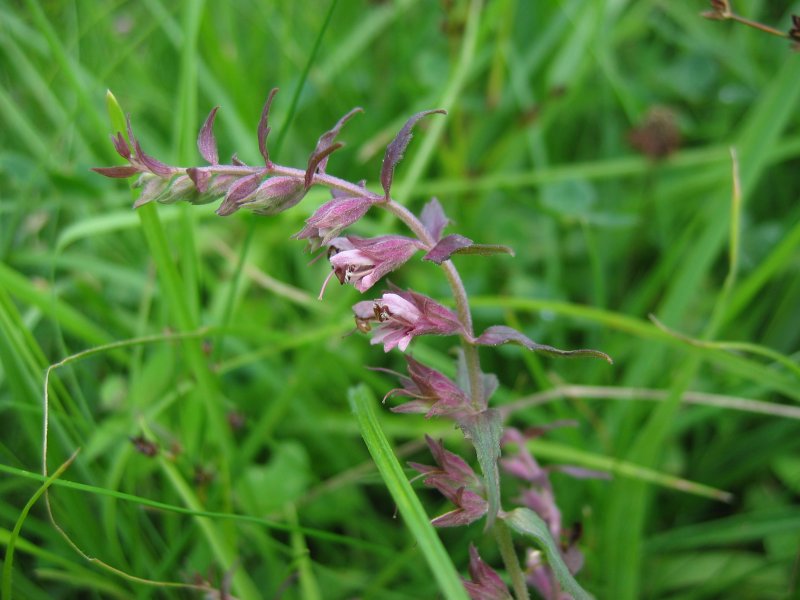 |  |  |  |  |
 |  |
An annual herb that grows to a height of 15-50 cm. The stem is erect, with arched branches, the stem and branches are covered with dense, soft and attached hair. Lancet-shaped or lancet-linear leaves, up to 5 cm in length and up to 1 cm in width, pointed at the top, 3-7 dull teeth and hairs along the edge of the leaf. Small, bisexual, double-lipped flowers tend to be red, pink, or purple in color. They are arranged in 8-50, dense, one-sided spike inflorescences.
The root system is peg-shaped, branched. When germinating, the seed forms a fine shoot, which often burrows into the rhizome of the adjacent plant and grows together with it, feeding on it. Fruit - elongated, hairy box with ovoid seeds.
The above-ground part of the plant is used for medicinal purposes. It is collected at the moment when the plant has bloomed - in early August. The plant is cut at soil level. The plant is dried on paper or cloth, 5-7 cm thick, by placing it on the remains in a shady and well-ventilated place. The plant is stored no longer than 2 years.
Red Bartsia
contains iridoid glycosides including aucubin, odontoside and catalpol, phenolic carbonates, up to 3% triterpene saponins, flavonoids such as luteolin-7-o-glucoside, apigenin, apigenin-7-o-glucoside, about 4% tannins and up to 1.5% resin, as well as essential oil and some alkaloids. Ascorbic acid, carotenoids, iron, copper, manganese, zinc, nickel, chromium and molybdenum are also found in the plant.
Medicinal significance
The
Red Bartsia
has become the object of research in various Soviet laboratories. The effects of decoction, concentration and dry extract were tested on animals. It has been established that preparations of the plant have pronounced cardiotonic properties and significantly reduce arterial blood pressure. The dry extract, in proportions of 1:4000, 1:2000, 1:1000 and 1:500, in all cases increased the amplitude of heart contraction by 11.7-18.6% and increased heart rhythm by 25-50%. The setting in a dose of 0.5gr/kg in dogs and rabbits produced an extrasystolic effect.
In large doses, the preparations suppressed motor activity and the ability to orientate, in addition, they created a sleep effect - it was determined that the plant acts as a mild tranquilizer.
There is a certain,
Red Bartsia, beneficial effect on the secretion of bile and the course of hepatitis: it enhances the production and secretion of bile, the connection of liver cells with ether is activated, thanks to the normalization of metabolic processes in the liver, and the overall condition improves.
This plant is widely used in folk medicine. Scientists recommend the decoction and infusion of the surface part of this plant to be used in case of heartache, cardiovascular diseases, digestive tract diseases, various liver diseases and spleen diseases. Nerve disorders, head and rheumatic pains, gout and malaria are treated with these preparations. The
Red Bartsia
is an effective temperature-reducing agent, in cases of various infectious diseases, including stomach infections and septic conditions. It is also used to treat laryngitis, upper respiratory tract catarrh, bronchitis, pneumonia and influenza. For the prevention of various hypertensive diseases, the settings of
Red Bartsia
are also used.
Adepts of folk medicine believe that this plant can cure endometriosis, mastopathy and fibromyoma.
Red Bartsia
is used in case of pancreatitis, chronic hepatitis, inflammation of the bile ducts.
